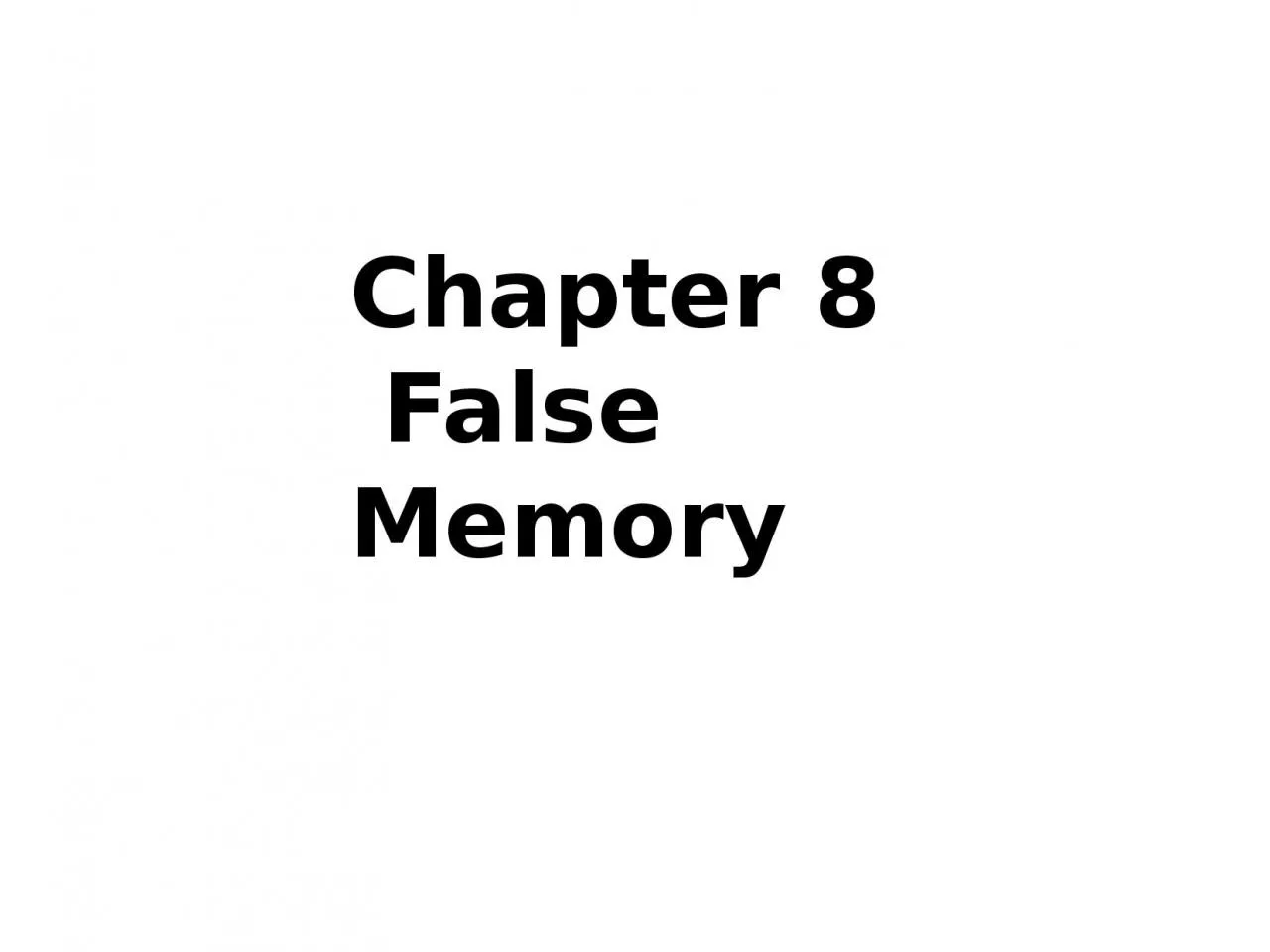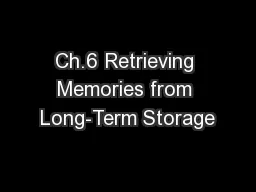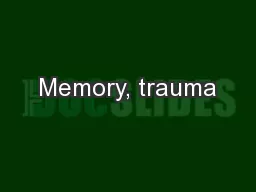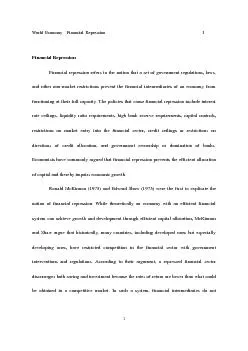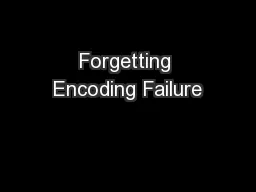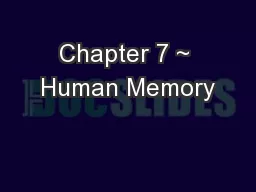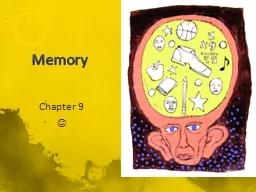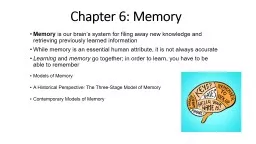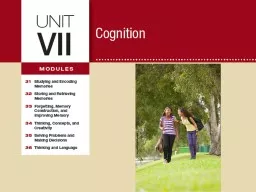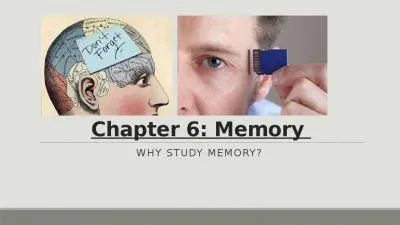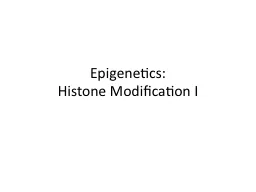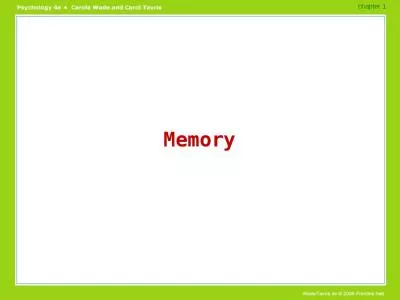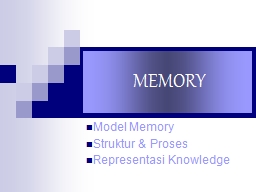PPT-Chapter 8 False Memory Recovered Memories: The Reality of Repression
Author : LifeOfTheParty | Published Date : 2022-08-03
Recovered memories Memories typically of traumatic experiences that have been forgotten to be retrieved later Loftus No such thing as recovered memories Current
Presentation Embed Code
Download Presentation
Download Presentation The PPT/PDF document "Chapter 8 False Memory Recovered Memori..." is the property of its rightful owner. Permission is granted to download and print the materials on this website for personal, non-commercial use only, and to display it on your personal computer provided you do not modify the materials and that you retain all copyright notices contained in the materials. By downloading content from our website, you accept the terms of this agreement.
Chapter 8 False Memory Recovered Memories: The Reality of Repression: Transcript
Download Rules Of Document
"Chapter 8 False Memory Recovered Memories: The Reality of Repression"The content belongs to its owner. You may download and print it for personal use, without modification, and keep all copyright notices. By downloading, you agree to these terms.
Related Documents

